Kuterra puts Irish company Nova Q’s beneficial-bacterial strategy to the test
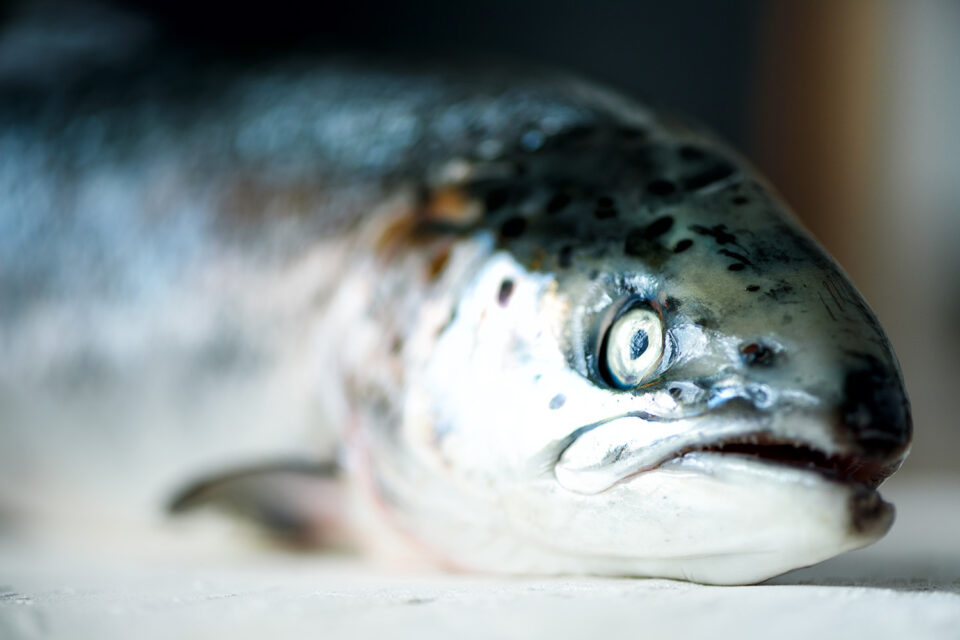
A recirculating aquaculture system (RAS) operator in Canada – one of the first land-based salmon producers in the world – says that a proactive approach to eliminating off-flavors in their fish is showing good results.
Kuterra, which operates a salmon RAS operation on Vancouver Island in British Columbia, Canada, is collaborating with Nova Q, an Ireland-based biotechnology company, to lower the levels of the off-flavor-causing metabolite geosmin from their system. Geosmin is released by microbes that grow within the tank system and efforts to eliminate it or at least reduce levels to a low threshold have been an industry-wide struggle. Too mush geosmin imparts an earthy flavor to the fish that consumers do not like.
Nova Q said the opportunity to work with Kuterra was the biggest-scale trial to date to prove its technology’s efficacy. Nova Q’s solution involves the on-site manufacturing of a microbial consortium (read: “good” bacteria) that is applied to the RAS water.
“The industry has been getting a reputation, everyone tarred with the same brush,” said Tom Scrope, UK manager at Nova Q, adding that the absence of geosmin from one particular site does not present a competitive advantage. “Because everyone deals with this, or the whole category gets tarnished.”
Gary Robinson, director of West Coast operations for Whole Oceans, LLC, the Maine-based company that owns Kuterra, told the Advocate that geosmin mitigation is a “significant” issue for all RAS operators, regardless of scale. But each system is unique, so the severity can vary by site. What’s virtually universal among RAS salmon farmers is their desire to command a premium price for their product.
“Premium-tasting fish is the starting point for obtaining premium prices,” Robinson said.
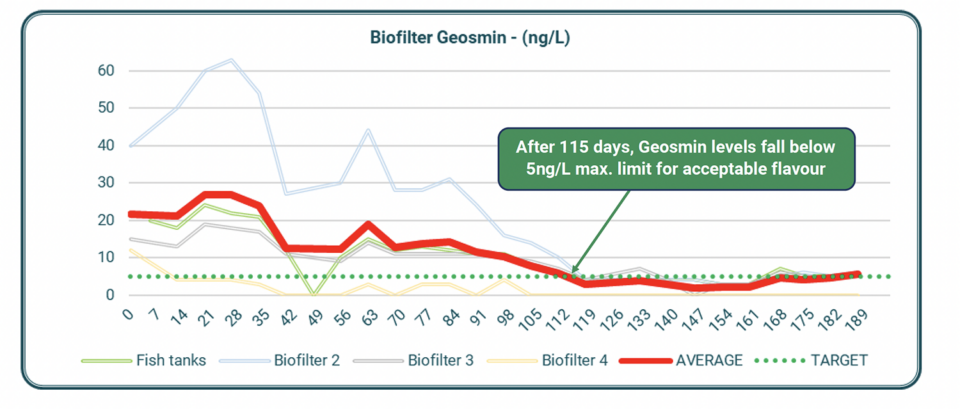
Scrope and Robinson pointed to numerous methods in which land-based aquaculture can address off-flavor-causing metabolites. One way is to increase the “makeup” water to flush out the contaminants. But that requires significant water use, and minimal water use is a hallmark for RAS farms. In this sense, the RAS would temporarily become a flow-through system.
“That’s a temporary fix, a plaster over the wound,” said Scrope.
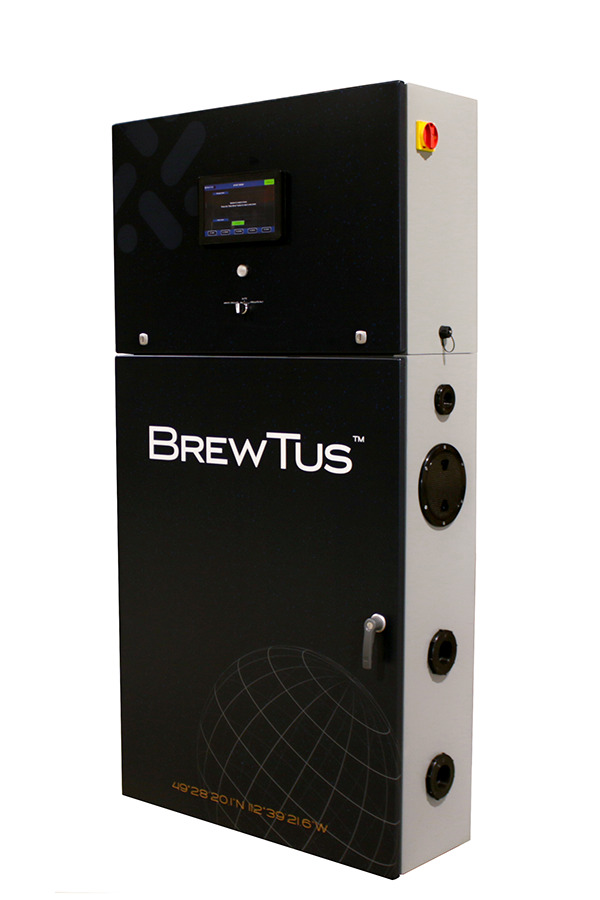
Robinson says Kuterra has tried a bevy of methods to curb geosmin, with “varying but unacceptable results.” Those include holding fish in clean purging waters for a longer time, which comes at a great economic cost as the fish are no longer feeding, and therefore, no longer growing.
They’ve also tried cleaning surfaces and removing biofilm from tank and sump walls; inducing higher swimming speed during purging to speed the process; operating the purge system at a lower oxygen content to increase respiration in fish; alerting the feed formulation, to lower phosphorous; charcoal filtration and others.
A more long-lasting and proactive solution is to address the water itself. Nova Q’s strategy is “microbiome management,” Scrope said, which means getting the right mix of bacteria in the water.
“The idea is to have the best microbial population at any one time, constantly dosing [the water] with beneficial bacteria,” he said. This involves producing it on-site, using a bioreactor. For the Kuterra trials, AdvancedAg (Nova Q’s North American partner in Canada) shipped them a prototype. In the future, the BrewTus machine – a portable bioreactor that produces the proper microbial mix – will be available to new customers.
Robinson and Scrope said they noticed a sustained decrease in geosmin level after about one month. But after three or four months, the geosmin levels plummeted to 5 nanograms per liter, which is below detectability and does not cause off-flavors.
“Historical [geosmin] levels were highly variable. Sometimes acceptable, sometimes not,” said Robinson. “The variation usually correlated to changes in water quality, the amount of new water added, fish biomass or feed rate. However, since biofilter seeding started, these changes don’t seem to have as large an impact on geosmin levels. Historically, no intervention used could achieve and sustain acceptable geosmin levels, the geosmin would always increase again. This trial has achieved and maintained acceptably low geosmin levels, even with reduced water use; which is unprecedented on this site.”
Scrope said the overarching goal is 100 percent removal of geosmin, which involves “swamping the system with good bacteria, so there’s no foothold” for geosmin.
“It may not be possible to completely eliminate it,” he admitted. “But here we’ve reduced both [makeup water and geosmin] at the same time. It was the bacteria doing the work, making it a proper recirc system again.”
One of the challenges is reigning in the system’s effectiveness, because you don’t want to get rid of the good bacteria, added Scrope: “If you outcompete all the good guys, you’ve kind of broken your system. Maybe you remove geosmin, but ammonia is now killing your fish.”
Nova Q’s RAS-Right liquid additive – containing Bacillus and nitrifying bacteria that grow fast – can be made on-site, and according to Robinson, is very easy.
“Set-up and operation of the bacterial culture incubator is very straightforward and requires very little effort,” Robinson said. “Dosing the RAS is a once-per-week event that requires less than one hour to complete.”
While microbiome management is clearly working for Kuterra, Robinson said all RAS facilities’ investment in this area depends on the severity of their problem.
“This is a fairly well-tested solution overall,” said Scrope. “This data on geosmin is a new string to the bow.”
Follow the Advocate on Twitter @GSA_Advocate
Now that you've reached the end of the article ...
… please consider supporting GSA’s mission to advance responsible seafood practices through education, advocacy and third-party assurances. The Advocate aims to document the evolution of responsible seafood practices and share the expansive knowledge of our vast network of contributors.
By becoming a Global Seafood Alliance member, you’re ensuring that all of the pre-competitive work we do through member benefits, resources and events can continue. Individual membership costs just $50 a year.
Not a GSA member? Join us.
Author
-
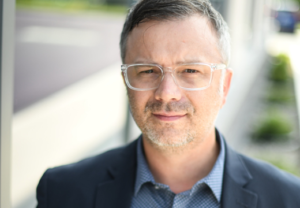
James Wright
Editorial Manager
Global Seafood Alliance
Portsmouth, NH, USA[103,114,111,46,100,111,111,102,97,101,115,108,97,98,111,108,103,64,116,104,103,105,114,119,46,115,101,109,97,106]
Tagged With
Related Posts
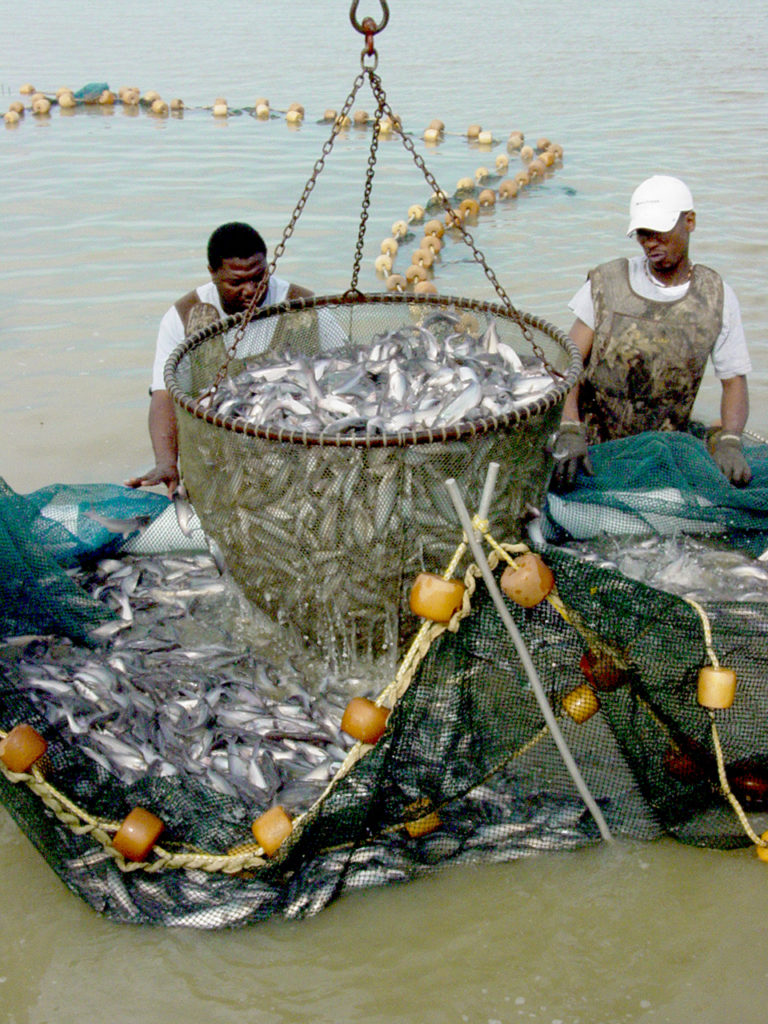
Intelligence
Common off-flavors in channel catfish following partial pond harvest
The authors conducted a study to determine whether channel catfish systematically develop off-flavors after partial harvest as well as the possible origins of the flavors.
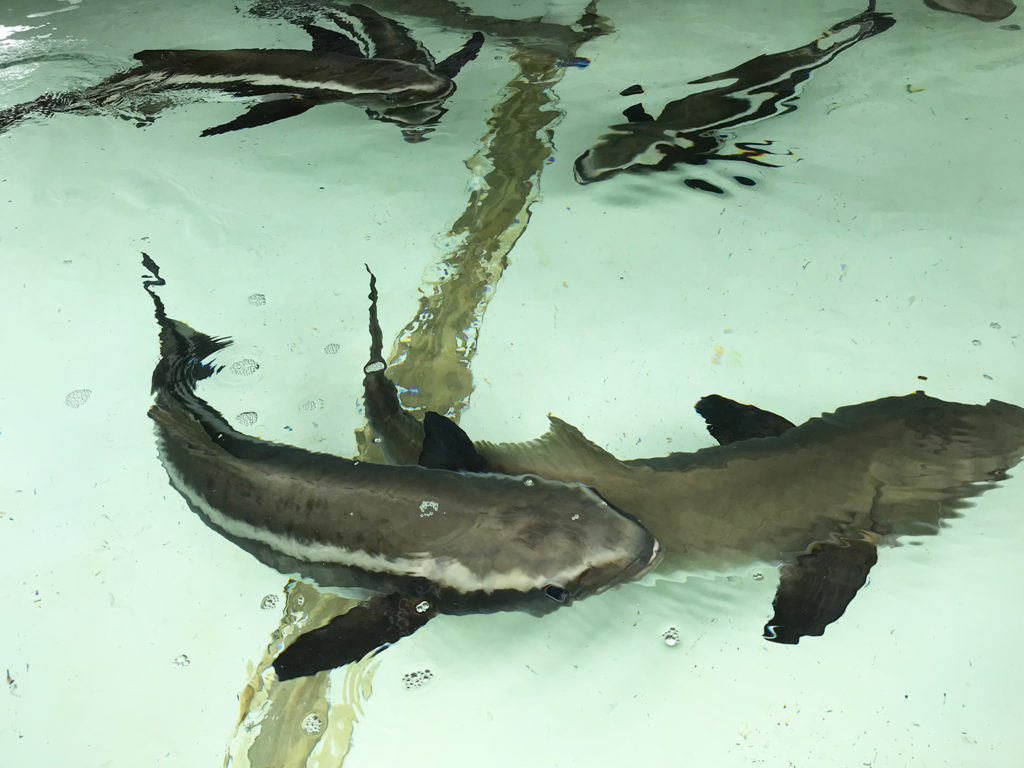
Innovation & Investment
Surge of off-flavor solutions for RAS continues
Startup companies in Ireland and the United States offer solutions for RAS operators seeking to mitigate the metabolites that cause off-flavors.
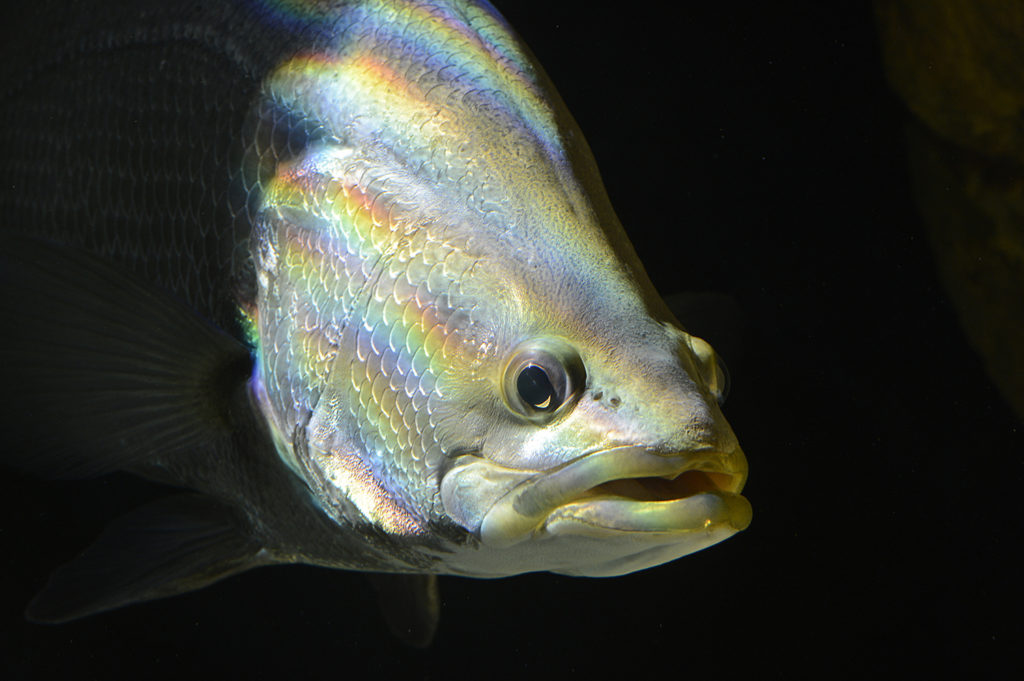
Intelligence
Efforts to address off-flavors in RAS fish are off the charts
Researchers, feed manufacturers and recirculating aquaculture system producers are working tirelessly to ensure their fish tastes better than ever.
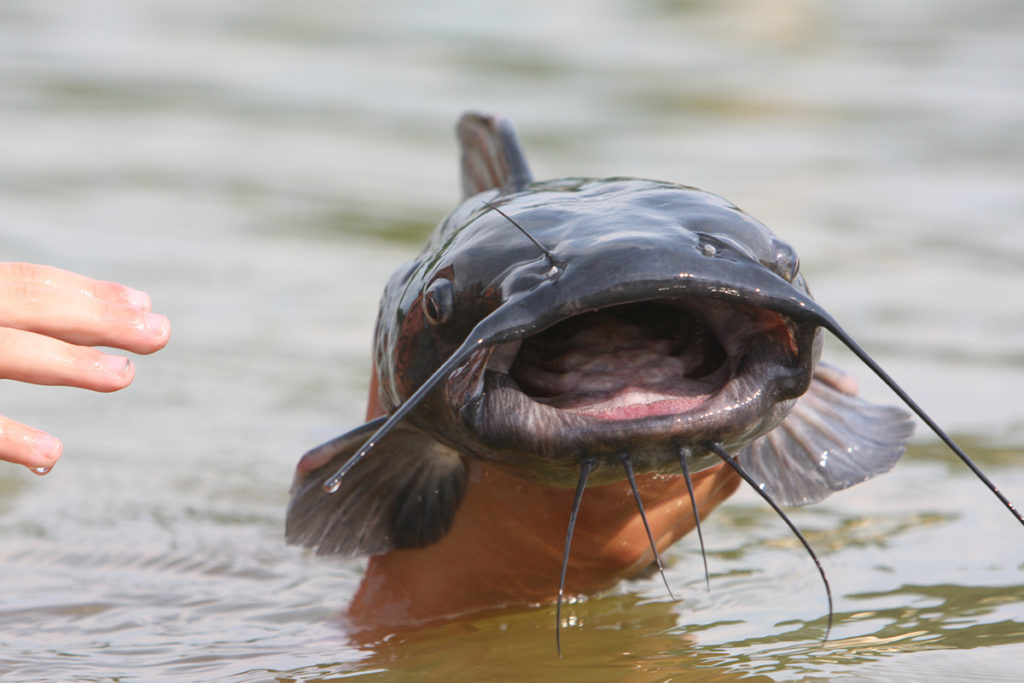
Innovation & Investment
U.S. catfish industry seeking ‘tangential expertise’ to tackle off-flavors
A HeroX challenge has fielded ideas for preventing or eliminating off-flavors in farmed catfish, with potential solutions coming from unexpected places.


